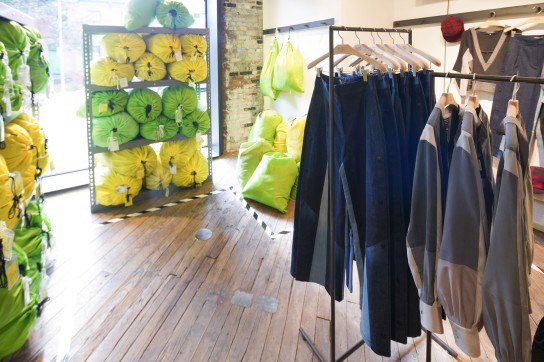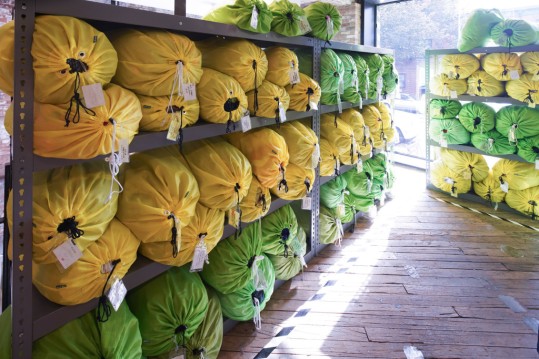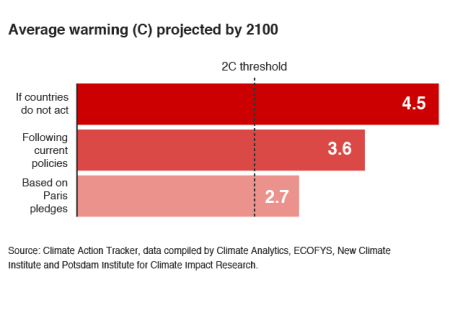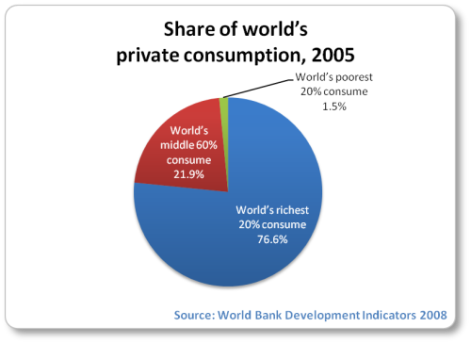 We have a huge plastic problem! It is literally everywhere and is a toxic problem as it is part of our daily lives.
We have a huge plastic problem! It is literally everywhere and is a toxic problem as it is part of our daily lives.
Plastic pollution is an epidemic primarily because it never biodegrades and it never goes away. An astonishing 50% of the plastic we use, we use just once and throw away. It is flooding our landfills, oceans and streets and does not solve the problem of long-term waste.
It’s also a huge problem for the health of wildlife, as many animals ingest it thinking it is food and can have problems thereafter breathing and digesting.
How do we make plastic more sustainable?
The bottom line is that there is simply too much plastic for our world to handle, and the problem is getting worse. Therefore today’s solution is less about recycling and more about minimizing plastic consumption and supporting brands that have innovative solutions to plastic production and waste.
Toothbrushes are detrimental too.
If we listen to our dentists, we should replace them at least every three months. That means we all chuck 4 plastic toothbrushes into landfill each year because they aren’t recycled. That is 40 toothbrushes a decade. Say the average age we live to in the UK is 80 something. That’s around 320 plastic toothbrushes each, and then times that by 66 million. Feeling queasy yet and not just because maths makes your head hurt?
 It takes about 200 to 400 years for a plastic toothbrush to actually decay, and scientifically plastic doesn’t decay. It just deforms and moves into either the soil level or the water level. So that’s 4 toothbrushes, per person per year, think about how many years worth of plastic each person is adding. So what’s a solution? Bamboo.
It takes about 200 to 400 years for a plastic toothbrush to actually decay, and scientifically plastic doesn’t decay. It just deforms and moves into either the soil level or the water level. So that’s 4 toothbrushes, per person per year, think about how many years worth of plastic each person is adding. So what’s a solution? Bamboo.
Who would think, bamboo?  If brands can work towards eliminating plastic straws, why not Toothbrushes?
If brands can work towards eliminating plastic straws, why not Toothbrushes?
Bamboo is sustainable because it is so fast growing, and it biodegrades. If it is a choice between a wooden handle and adding to the ever-growing pile of plastic toothbrushes in landfill I know what I’m choosing.
With plastic being such a massive detriment to society, switching out the first plastic thing you use in the morning, the toothbrush is a good approach for the average consumer to reduce plastic.
Bamboo toothbrushes are more expensive, in monetary terms alone. When you factor in the cost to the environment and the fact that plastic is made using oil, a non-renewable resource, the real cost of a plastic toothbrush becomes more apparent. If you are planning on bequeathing your plastic toothbrushes to your grandkids and they to their own grandkids, then you’ve eventually got your money’s worth environmentally speaking.
Switch to stainless steel bottles, and bamboo straws!
Grocery bags of course, there are so many natural options like Jute and Cotton bags.









Healthcare Systems: move towards sustainability
November 17, 2016Good health is dependent on so much more than a good doctor and access to treatment. “The rest is environmental and behavioral—clean air, clean water, good food. We can’t be healthy people if our communities aren’t healthy (Jamie Harvie)”
In The Case for Commons Health Care, an article published in Explore: The Journal of Science and Healing, he highlights how a tragedy of the commons is underway in health care, agriculture, and our global climate (onthecommons.org).
There has been a push by Health Systems like the NHS and Kaiser Permanente in the United States to promote community ownership and involvement in healthcare. This means community involvement in the decision making process of fund allocations, community campaigns to educate people on healthy living lifestyles. Education on prevention and behavioral changes that will impact health. The system cannot survive unless preventative care and behaviors of patients changes. Currently, health systems are treating very sick people with health issues that are preventable by behavioral changes.
Healthcare systems can no longer continue to run as profit systems that fill as many beds as possible, writing as many tests and overutilize resources. It must be a preventative system that uses the community to create social awareness around healthy living and ways to prevent illness by lifestyle choices and access. Healthcare needs to be seen as a lifestyle and a place that promotes healthy living and care for our bodies.
How hospitals help tackle obesity – Commons Health Hospital Challenge
Tags:community, health, healthcare, sustainability
Posted in Commentary, Uncategorized | Leave a Comment »